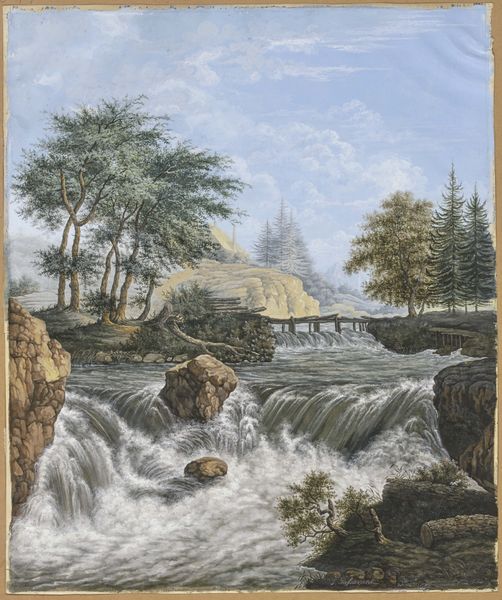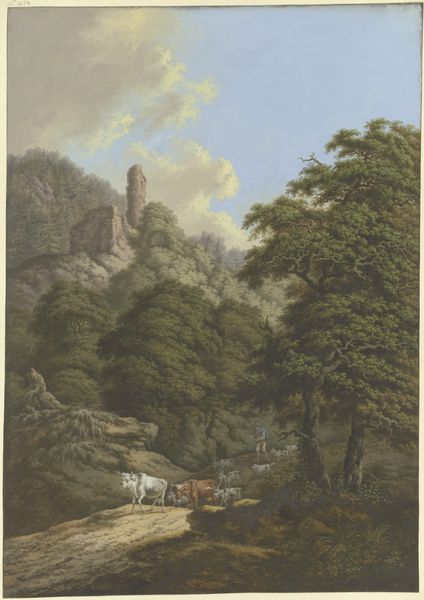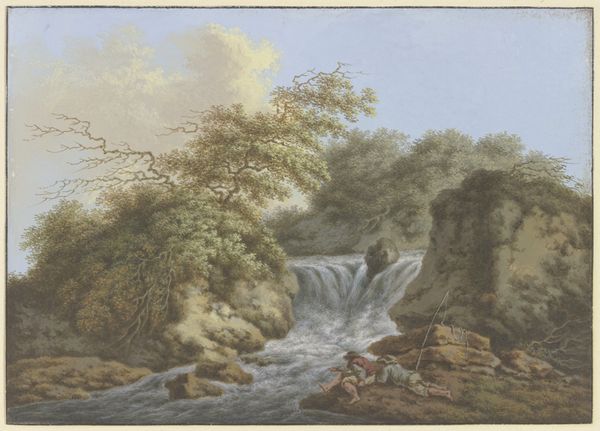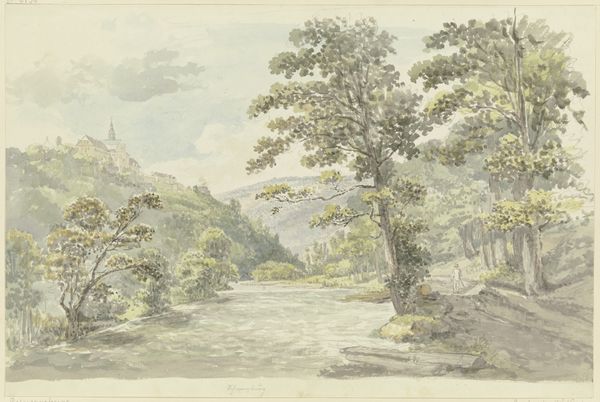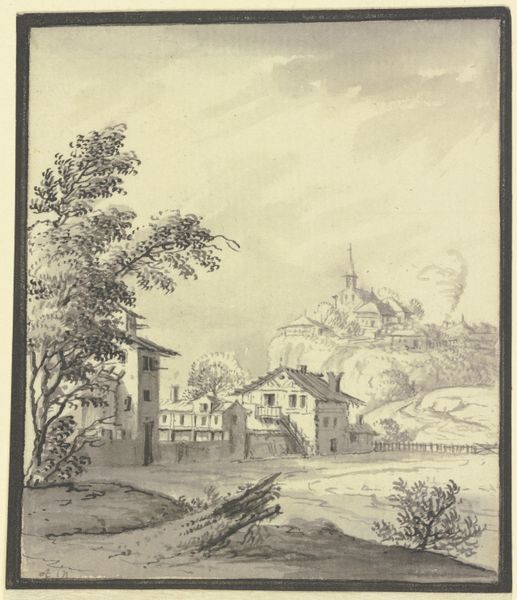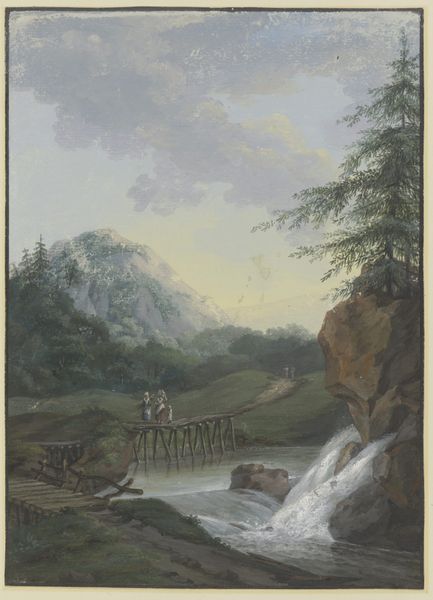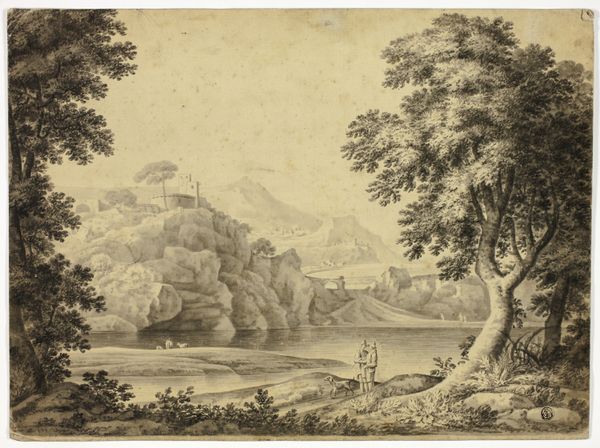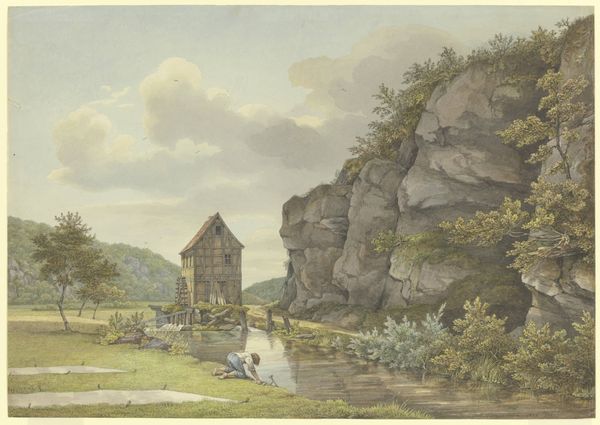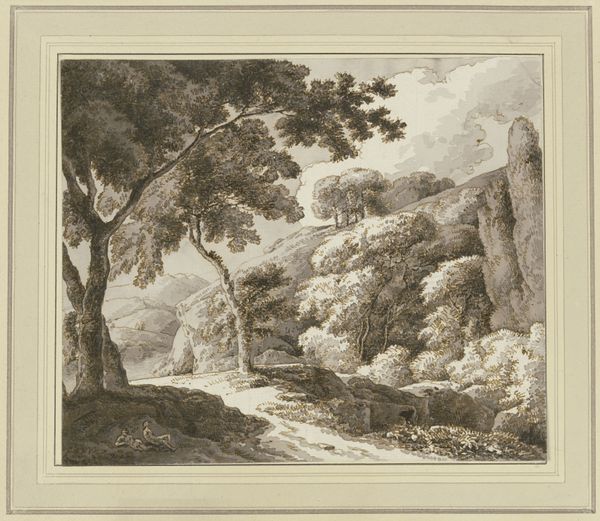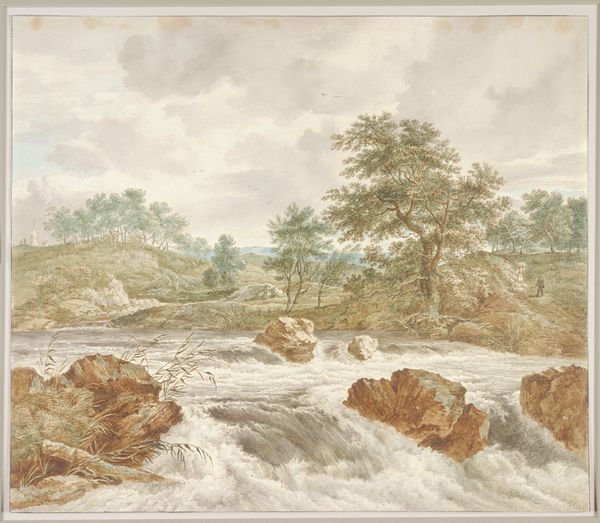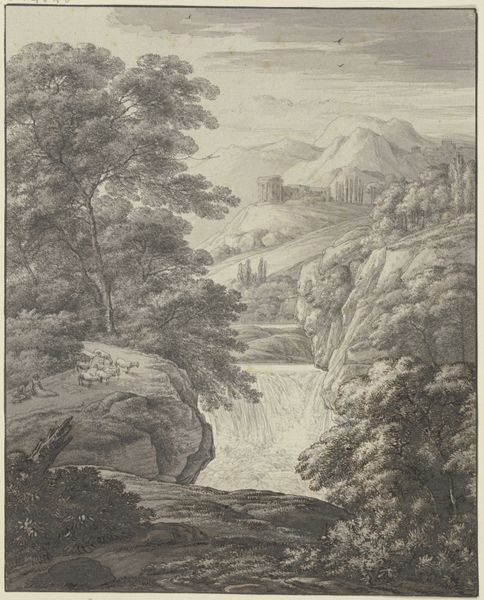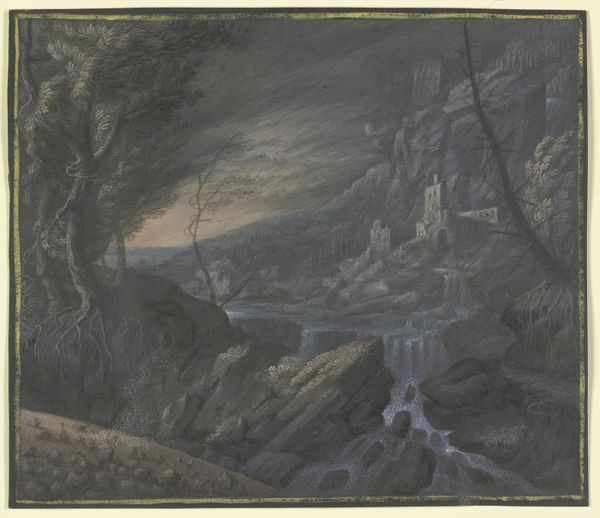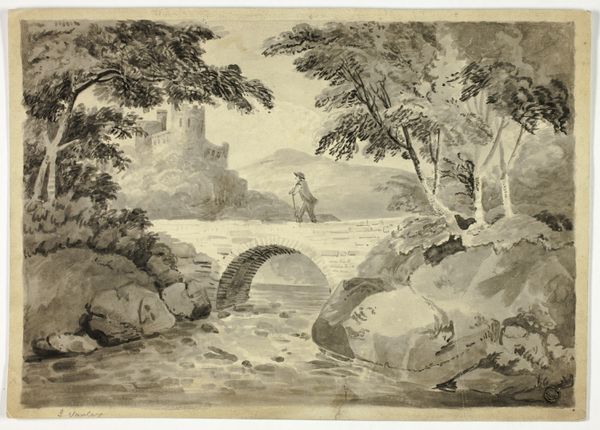
drawing, paper, watercolor
#
drawing
#
netherlandish
#
toned paper
#
16_19th-century
#
landscape
#
paper
#
oil painting
#
watercolor
#
german
#
coloured pencil
#
romanticism
#
15_18th-century
#
14_17th-century
#
watercolour illustration
#
watercolor
Copyright: Public Domain
Curator: Soaked and subdued, isn't it? My first thought: Where's the sun? Feels like a day where your boots are damp no matter what you do. Editor: Indeed. Here we have a landscape drawing titled "Ein reißender Bach mit einer Brücke und Blick in ein Tal" – "A Rushing Stream with a Bridge and a View into a Valley." It’s attributed to Johann David Passavant, created in the 18th or 19th century. Its medium incorporates watercolor and colored pencil on toned paper, now residing here at the Städel Museum. It fits well within a Romantic sensibility, engaging with notions of nature, sublimity, and nation. Curator: Nation, huh? I get more of a "lost socks and lukewarm tea" kind of vibe. But tell me more about "nation" in a damp drawing. Editor: Well, Romanticism was heavily invested in concepts of national identity, in searching for defining symbols of culture and geography. Often the landscape becomes the symbolic body of the nation itself, its dramatic peaks and valleys mirroring the struggles and aspirations of its people. This sort of unbridled and fierce landscape, with a barely manageable river and imposing rock faces, would stand in stark contrast to flatter lands and be held in pride as indicative of the German state's strong identity. The valley and its distant reach suggest this connects with something ancient and powerful. Curator: I see, though that makes me feel worse for the socks. But it makes sense, finding identity in a landscape. What's striking to me is the bridge—it's not grand, not Roman, it is so precarious looking and slapdash but necessary to reach and connect. Almost human amid the overpowering landscape. Editor: The bridge certainly reads as a space of intersection, both literally, across the river, and symbolically, as humans forging their place within this dramatic scene. In some respects, you are correct; it allows a subtle critique of more formal, state-sanctioned approaches to land, space and ownership by re-orientating focus toward something small-scale and practical that exists on the periphery of any great nationalist narrative. The rapid brushwork and blurring of the paper, combined with its scale as a drawing, evokes that sensibility powerfully. Curator: Makes the mountain less scary somehow. More just… there. Which, if anything, gives me a little hope that the socks might dry by lunchtime. Editor: A pleasant conclusion, if perhaps, not what Passavant initially intended. For me, I appreciate this work as a document speaking of humans attempting to engage with that environment on their own terms; a negotiation, not just dominance, perhaps even on somewhat soggy terms.
Comments
No comments
Be the first to comment and join the conversation on the ultimate creative platform.
